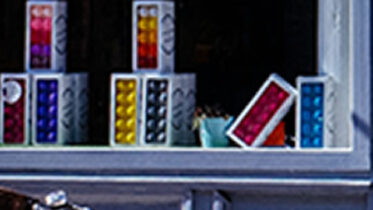Fair trademark use: enhanced approach? The ZARA case
- 24 May 2022
- Articles
Spanish readers will know about the ZARA vs Club Blinko case in Spain. For those who are not familiar with it, the dispute caught some attention in the IP field because of the discussion about the scope of well-known trademarks and the fair-use defense. The Italian-based TMT company Buongiorno (acting in Spain as Buongiorno Myalert, S.A.) sponsored 2010 a contest with an interesting prize: a 1000 € gift card issued by the well-known brand ZARA. The Spanish company sued for trademark infringement on the grounds of the likelihood of confusion and free riding (letters b) and c) art. 34 Spanish Trademark Law – STL; arts. 5.1 b and 5.2 EU Directive 2008/95). Buongiorno’s defense ran along with the fair use exception (art. 37 STL; art. 6 EU Directive).
Both first and appeal courts dismissed the action invoking the well-known EUCJ decisions in Google France (C-236/08; C-237/08); Loreal eBay (C-324/09) and Interflora (C-323/09). According to the first instance ruling –confirmed by the Province Court – none of the trademark functions were harmed by the defendant’s use of ZARA so consequently, no infringement occurred. The decision weighed the ability of the Internet average consumer for finding out whether any commercial link exists between both companies (reasoning quite similar to Interflora, pg. 81).
The decision was challenged unsuccessfully first before the Supreme Court. However, and in an unexpected turn of events, a nullity claim succeeded, and the Court revoked its own decision. The cassation appeal now stays while a referral for a preliminary ruling has been sent to the Court of Justice: Is Art. 6(1)(c) of Directive 89/104/EC to be interpreted as implicitly included in the limit to trademark rights the more general behavior now included under Art. 14(1)(c) of EU Directive 2015/2436: use of the trademark to identify or refer to goods or services as those of the proprietor of that trademark”?
The referral for a preliminary ruling:
It has been more than twenty years since the EUCJ ruled in BMW / Deenik case (C-63/97) about the limits of the trademark right in connection with the repair and maintenance of goods.
The question now posed by the Spanish Supreme Court is equally interesting. According to EUCJ decisions issued afterward in Gillette (C-288/03) and Portakabin (C-558-08),” the intended purpose of products ‘as accessories or spare parts’ was cited by the legislature only by way of example, that being the usual situation in which it is necessary to use a trademark to indicate the intended purpose of a product” (pg. 63). On the other hand, the following paragraph of the decision states that such fair use must be “limited” “and only to enable providers of goods or services, which are supplementary to the goods or services offered by a trademark proprietor, to use that mark to inform the public of the practical link between their goods or services and those of the proprietor of the mark”
Whereas 27 of EU Directive 2015/2436 introduces the issue along with a set of examples of fair – use (use in the context of resale of goods; artistic expression). Does this mean – as the Supreme Court wonders – that this “enhanced approach” is sought by the European legislator?
We will find out in the following weeks. The explanation offered by the ECJ will be much appreciated but as usual, the decision will surely not leave anybody indifferent. Should we expect any changes in comparative advertising and/or unfair competition rulings in the future if this enhanced approach is approved?
There is no doubt that the average consumer is not simple anymore. Landmark cases such as Interflora understood and welcomed that. Although the frame of this case is the long-forgotten SMS – marketing practice (the facts date back before 2010) this decision might be an appetizer of what new realities such as the “metaverse” might bring for trademark rights and their exclusionary scope.








